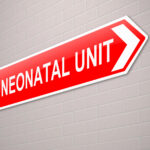European safety officials have ordered checks on certain Airbus speed sensors supplied by U.S. manufacturer Goodrich, just weeks after clamping down on similar equipment from France’s Thales.
Potentially faulty speed readings from sensors made by Thales are at the center of investigations into the crash of an Air France A330-200 jet in the Atlantic on June 1.
In an “airworthiness directive” dated Sept. 22, the European Aviation Safety Agency (EASA) said there had been reports of loose fittings on a number of Goodrich sensors, known as pitot probes.
This could be the result of “mis-torque … at equipment manufacturing level,” the Cologne-based agency said. If not corrected, such a problem could lead to an air leak and false speed readings, the agency said in an industry note.
Goodrich denied supplying a faulty batch of probes. “Goodrich has not experienced any manufacturing, in-service or repair problems with (the) probes,” Lisa Bottle, vice president of communications, said by email, adding the directive was a precautionary response to a warning from one airline.
“Goodrich checked the manufacturing records for these probes and found them to be compliant with design, manufacturing and functional acceptance testing requirements,” she said.
Shares in Goodrich, which supplies aircraft wheels and brakes as well as high-tech military reconnaissance systems, fell 1.4 percent in a slightly firmer market on Thursday.
The Goodrich sensors were designed for both the Airbus A330 twinjet and the A340, a larger four-engined sister model.
It is the first time Goodrich sensors have come under the spotlight since the Air France crash highlighted the occasional fragility of systems used to measure an aircraft’s speed.
All 228 people on board were killed when Air France flight AF447 crashed en route from Rio de Janeiro to Paris.
An Airbus spokesman said the checks affected a “limited batch” of sensors, tracked down through their serial numbers.
A spokeswoman for the EASA said the problems would be “relatively easy” to address and services were unlikely to be severely disrupted. The number of airlines and aircraft affected was not available.
NO GOODRICH DESIGN FLAW
Investigators revealed inconsistent speed readings from the three Thales sensors on board the doomed Air France A330, but have said it is too early to say exactly what caused the crash.
Pitot probes take pressure readings from which computer systems calculate an aircraft’s speed, but they are vulnerable to icing or anything else that interrupts the air flow. Without accurate data, pilots can accidentally fly the plane too fast, putting pressure on its structure, or too slowly, causing it to stall.
Safety filings show Airbus has faced sporadic reports of A330 speed sensor problems since at least 2001. A spate of further incidents emerged after the June crash, including on an Air France flight from Rome to Paris in July.
Investigators attribute at least part of the new wave to a known knock-on effect of major accidents, in which pilots report momentary glitches that would otherwise pass almost unnoticed.
EASA last month banned the particular model of Thales sensor installed on the crashed Air France jet and restricted the use of a newer Thales model, increasing demand for Goodrich sensors.
The EASA spokeswoman said it had acted over the quality of a batch of sensors leaving the Goodrich factory but not over their design. In the case of Thales probes, safety officials had been more worried about their inherent resistance to bad conditions.
(Editing by Ralph Boulton)
Topics Europe Aviation Aerospace France Manufacturing
Was this article valuable?
Here are more articles you may enjoy.


 Chubb, The Hartford, Liberty and Travelers Team Up on Surety Tech Launch
Chubb, The Hartford, Liberty and Travelers Team Up on Surety Tech Launch  Trump Administration Turning to Private Firms in Cyber Offensive
Trump Administration Turning to Private Firms in Cyber Offensive  Court Awards $32 Million Over Premature Baby’s Death at Yale Hospital
Court Awards $32 Million Over Premature Baby’s Death at Yale Hospital  Death at Universal’s Orlando Resort Roller Coaster Ruled Accidental
Death at Universal’s Orlando Resort Roller Coaster Ruled Accidental 

